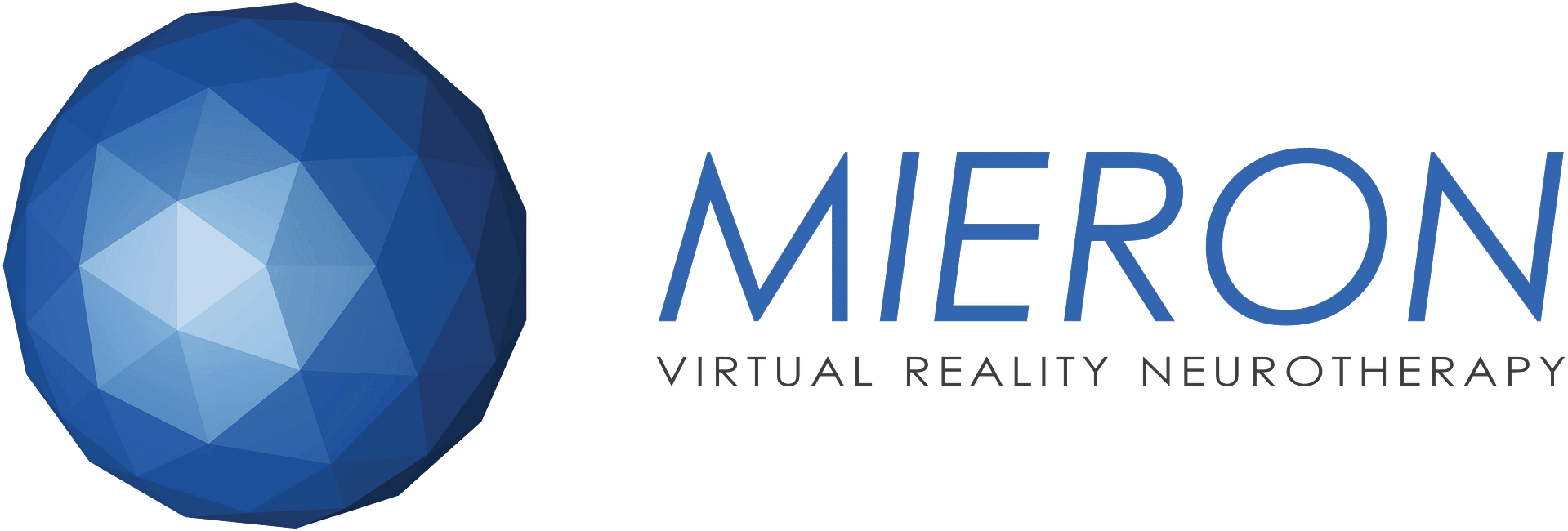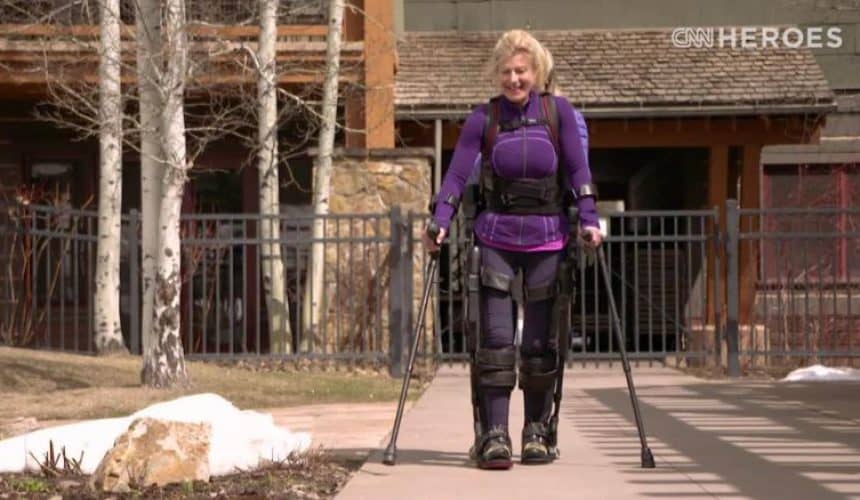Amanda Boxtel currently serves as Executive Director for the Bridging Bionics Foundation, which aims to bridge human mobility with exoskeletons and bionic technology.
The group’s physical therapists work one-on-one with clients, creating individualized plans based on their mobility issues — ranging from spinal cord injuries to neurological disorders like multiple sclerosis, cerebral palsy and Parkinson’s disease.
After more than two decades of paralysis and a journey across continents, her pursuit is one of spirit-mind-body transformation. While her spinal cord injury took away her ability to walk, it didn’t take away her ability to dream.
Amanda’s resilience and can-do attitude was recognized as she was recently named CNN Hero of the Year in 2018.
When Amanda came to Los Angeles to try Mieron, she had never performed gait-training with a lokomat or therastride. Though well versed in the exoskeleton, the body movements that are required with treadmill gait training were foreign to her. Amanda, through her bright eyes and radiant smile, was becoming frustrated. While she was trying to coordinate her reciprocal arm motion by manually swinging the opposite arm to her leading leg, her frustration peaked. That is, until she tried Mieron.
When Amanda put the Mieron headset on, she was immediately transformed to a river-side environment, with a forward moving experience that matched her manual walking speed. Suddenly, the laborious effort of coordinating her opposite arm to leg became natural, and Amanda’s spirits once again lifted.
“I feel as if I’m doing it, and I’m walking! I’m doing it while I’m getting my workout, but I’m not thinking of my workout. Before I was so focused on my legs and am I doing it properly, but [with Mieron on] everything fell into sync and I was enjoying the experience of walking outside” – Amanda Boxtel
You can see her reaction, here.
Aside from the mood-boost, a primary goal after SCI is typically to retrain walking. Arm swing is a natural feature of human locomotion and although walking can be accomplished without arm swing, coordinated arm movement naturally emerges in neurologically-intact individuals.1 Arm swing is believed to help with balance, reducing the center of mass, and increases metabolic efficiency. Regardless of the exact role of arm swing, is likely supported by neuronal circuitry linking spinal centers innervating the arms and legs2 and may be guided by cortical control.3
Scientific understandings underscore that (1) repetitive sensory experiences can shape motor learning and enhance activity-dependent neural plasticity and (2) augmenting sensory input provided to the spinal cord when descending supraspinal input is diminished can enhance task-specific training outcomes.4 Additionally, some evidence suggests integration of the upper extremities can influence lower extremity motor output.5–7 Therefore, rehabilitation and/or daily activities may impact walking-related arm movement, which in turn, could influence walking recovery after SCI.
With these factors in mind, rehabilitation efforts are believed to benefit from highlighting arm swing as an important factor. When the frustrations of ‘can’ and ‘can’t’ do are eliminated by removing the focus of the individual from their body movements, it is amazing to see how cortical control may be re-established to allow the body to take over the movements for itself.
1. Craik R, Herman R, Finley F. Advances in Behavioral Biology. In: Herman R, Grillner S, Stein P, Stuart D, editors. Human solutions for locomotion: interlimb coordination. Plenum Press; New York: 1976. pp. 51–64. [Google Scholar] [Ref list]
2. The quadrupedal nature of human bipedal locomotion.
Zehr EP, Hundza SR, Vasudevan EV
Exerc Sport Sci Rev. 2009 Apr; 37(2):102-8.
3. Corticospinal contribution to arm muscle activity during human walking.
Barthelemy D, Nielsen JB
J Physiol. 2010 Mar 15; 588(Pt 6):967-79.
4. Plasticity of the spinal neural circuitry after injury.
Edgerton VR, Tillakaratne NJ, Bigbee AJ, de Leon RD, Roy RR
Annu Rev Neurosci. 2004; 27():145-67.
5. Neural coupling between upper and lower limbs during recumbent stepping.
Huang HJ, Ferris DP
J Appl Physiol (1985). 2004 Oct; 97(4):1299-308.
6. Kawashima N, Nozaki D, Abe MO, Nakazawa K. Shaping appropriate locomotive motor output through interlimb neural pathway within spinal cord in humans. J Neurophysiol. 2008 Jun;99(6):2946–55. [PubMed] [Google Scholar]
7. Stephenson JL, De Serres SJ, Lamontagne A. The effect of arm movements on the lower limb during gait after a stroke. Gait Posture. 2010 Jan;31(1):109–15. [PubMed] [Google Scholar]







